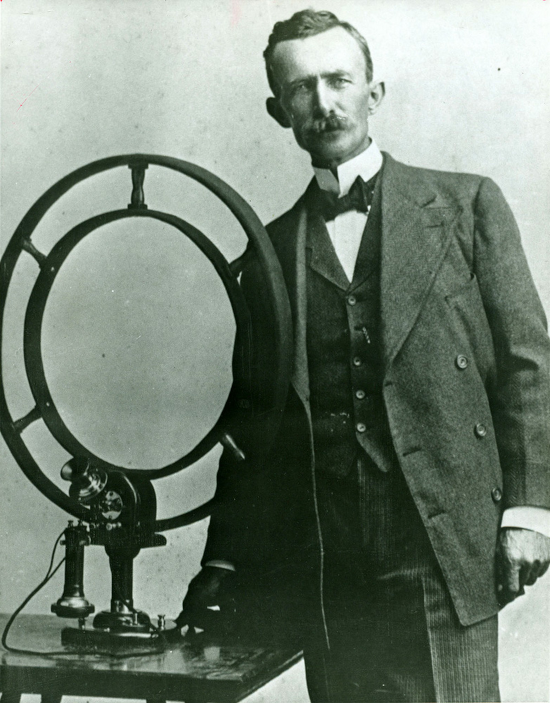Was Nathan B. Stubblefield the Father of Broadcasting?

Patriotic Kentuckians have sent us a state magazine with an interesting account of the scarcely recognized work of Nathan B. Stubblefield, who, it is claimed, is the real father of broadcasting.
Stubblefield died a lonely hermit in a desolate hut near Murray, Kentucky, two years ago. A memorial was recently dedicated to him there with the inscription, "the first man in history to transmit and receive the human voice without the use of intervening wires." Professor L. J. Horton of Kentucky State Teachers College personally remembers a demonstration by Stubblefield before a thousand local citizens on January 1, 1902. Another demonstration before a thousand local citizens took place on March 30, 1902, from the steamer Bartholdi on the Potomac River.
R. P. Clarkson, in the New York Sun, does not take this claim seriously. He says there had been a number of occasions previous when the voice was transmitted through space and cites one as that of A. F. Collins, now living a little way up the Hudson, who successfully transmitted the voice before 1900.
A Chicago newspaper recently reprinted an article it had published in the 1860s wherein it was stated that the time was not too far distant when people on the mountains of the Pacific coast would be able to talk through space to the people on the mountains of the Atlantic coast.
All of this is of interest because it shows that radio of today was born not by accident nor by the thought of one mind, but by independent thought of many minds in all the civilized world. Every little improvement has come as the result of distilled thought from many minds. Probably the greatest improvement of all will be the perfected Radio-Vision, the focus point of the greatest amount of scientific research along radio lines today.
From Radio Digest, June 1930
Add a Comment
All comments are moderated before publication. These HTML tags are permitted: <p>, <b>, <i>, <a>, and <blockquote>.
Top 10 Articles
- The Marriage of Don Ameche and Honore Prendergast
- The Night Arthur Godfrey Fired a Singer On Live Radio
- Early Radio Announcers Invented Their Profession in the 1920s
- The Mythical Town of East Tincup, Colorado
- The Earliest Radio Shows of the 1920s
- The Great Radio Detectives of the 1950s
- The Home Life of Jack Benny
- Why Vladimir Horowitz Stopped Performing in the 1930s
- Judy Canova: The Queen of Hillbilly Hokum
- Some of the Unsung Heroes of Radio

